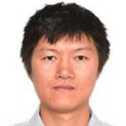Optofluidics 2018
A special issue of Micromachines (ISSN 2072-666X).
Deadline for manuscript submissions: closed (10 April 2019) | Viewed by 42662
Special Issue Editors
Interests: photonic crystal fibers devices; advanced optical fiber manufacturing technology; fiber-based optofluidics; fiber sensors; all-fiber devices and laser technology
Special Issues, Collections and Topics in MDPI journals
Interests: droplet; microcapsule; electrowetting; self-assembly
Interests: optical fiber communications; optical fiber devices; optical sensors
Special Issues, Collections and Topics in MDPI journals
Special Issue Information
Dear Colleagues,
Optofluidics is the study of interactions between light and fluids in the use of either light to control the flow of fluids or fluids to guide the flow of light, particularly at the micro-scale. Specific applications of the former one include optowetting, optical trapping, particle and cell sorting, and nanoparticle assisted optical flow control. Notable applications of the latter one are in waveguides, displays, optical switches, sensors, as well as in lab-on-a-chip, lab-in-fiber, and smart optical devices. In this special issue, we invite insight from investigators and scientists in the field to show your work with research papers, short communications, and review articles that focus on the new technology, fundamental research, concept, and application cases in the area of Optofluidics.
Prof. Limin Xiao
Prof. Lingling Shui
Prof. Changyuan Yu
Guest Editors
Manuscript Submission Information
Manuscripts should be submitted online at www.mdpi.com by registering and logging in to this website. Once you are registered, click here to go to the submission form. Manuscripts can be submitted until the deadline. All submissions that pass pre-check are peer-reviewed. Accepted papers will be published continuously in the journal (as soon as accepted) and will be listed together on the special issue website. Research articles, review articles as well as short communications are invited. For planned papers, a title and short abstract (about 100 words) can be sent to the Editorial Office for announcement on this website.
Submitted manuscripts should not have been published previously, nor be under consideration for publication elsewhere (except conference proceedings papers). All manuscripts are thoroughly refereed through a single-blind peer-review process. A guide for authors and other relevant information for submission of manuscripts is available on the Instructions for Authors page. Micromachines is an international peer-reviewed open access monthly journal published by MDPI.
Please visit the Instructions for Authors page before submitting a manuscript. The Article Processing Charge (APC) for publication in this open access journal is 2600 CHF (Swiss Francs). Submitted papers should be well formatted and use good English. Authors may use MDPI's English editing service prior to publication or during author revisions.
Keywords
- lab on a chip
- lab in fiber
- microfluidics and droplets
- optofluidics
- functional optical devices








